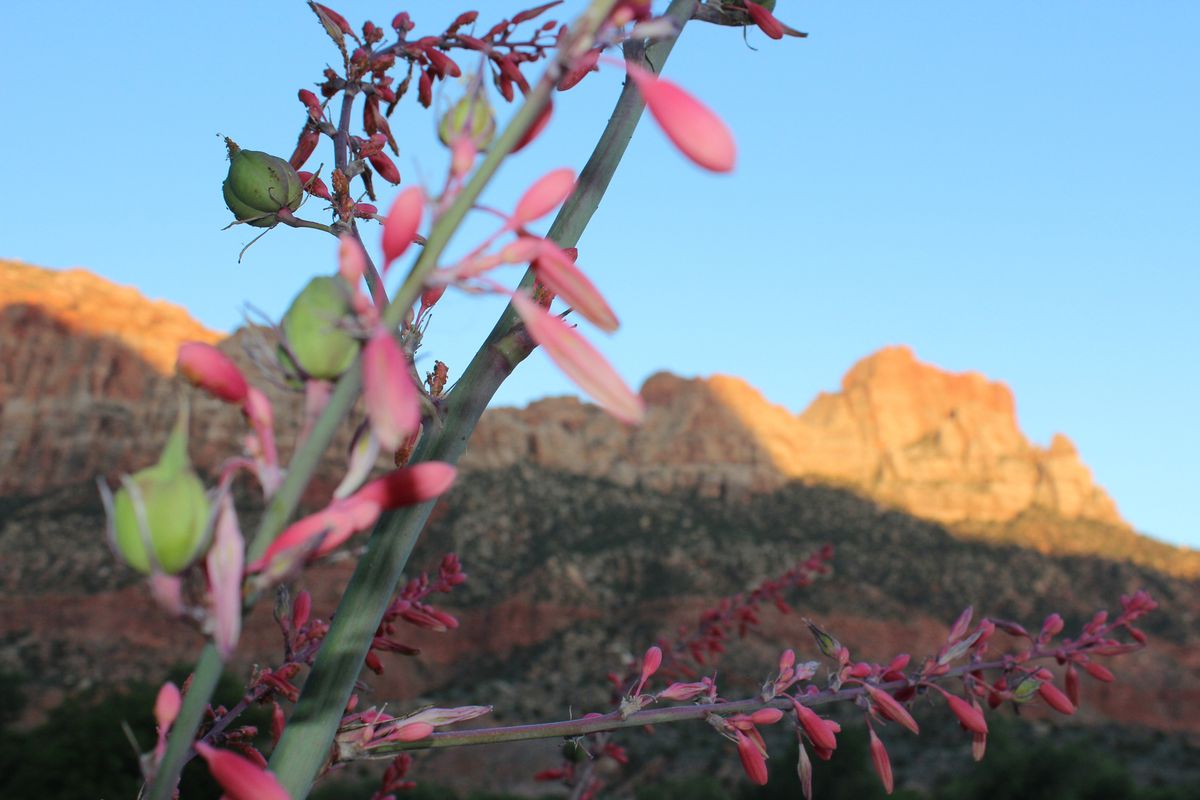Natural perfection
Zion’s ancient mountains have patiently endured generations of visitors

Z ION NATIONAL PARK, Utah – This is a spiritual place. A glorious place. A place of serene ocher mountains and leaning narrow canyons.
“People are coming not only to tour the park but to nourish themselves,” said Harriet Killshorse, owner of a local antiques shop, who has lived amid the enviable scenery for 25 years. “You can’t help but feel the mountain spirits.”
As Zion National Park’s popularity rises, those spirits may be feeling a bit crushed and crowded these days. But Zion is coping.
“We are having severe issues with parking,” said park ranger Jamie Mansfield. “We have to figure out how not to love the place too much.”
When America’s naturalists and lawmakers began designating national parks, the idea was to preserve beautiful places for future generations. In 1903, artist Frederick Dellenbaugh’s painting of Zion’s ravishing loveliness was displayed at the St. Louis World’s Fair, prompting people back east to marvel and officials to name it a national monument in 1909, and in 1919, a congressional bill designating Zion National Park was signed into law.
With its towering sandstone cliffs and slot canyons shaped over the millenia by the winding Virgin River, Zion is one of the nation’s busiest national parks. This year, an 18 percent jump in visitors through May puts it on pace for 3.6 million visitors in 2015 – 1 million more than in 2006. The visitor center parking lot is full by 10 a.m. A system of park and town shuttles is efficient but can get overwhelmed.
One thing protecting Zion’s treasures? The far-sighted decision in 1997 to ban cars in Zion Canyon from March 15 to Oct. 25. You either have to take a shuttle or hike.
Solitary contemplation of nature’s beauty can still be had at Zion, which sprawls over 229 acres. You just have to look harder to find it.
One morning on the Emerald Pools Trail, waterfalls spill from above as visitors stroll below, gripping an iron railing fastened to rock. Because Zion is in oft-parched southwest Utah, visitors expect arid conditions. But the microclimate of Zion and its meandering Virgin River creates lush, green areas flush with ferns, columbines and cottonwood trees.
I meet Sherry Schmidt, her husband and twin 11-year-old daughters. The family is trying to see highlights of Zion in just two days as part of a sightseeing circuit. They’ve just left arid Arches and Canyonlands National Parks and are enjoying the green of Zion.
“The parks are all very different,” Schmidt said, pausing at a lookout that encompasses Zion Canyon from a bird’s-eye view. “But you can see how they are all connected.”
Zion’s most famous sights include Emerald Pools and the Narrows, a water-filled slot canyon that, at points, is only 20 feet wide. Zion’s most famous hike is Angel’s Landing, a not-for-the-faint-of-heart trek with precarious drop-offs. The park’s most famous vista may be the Court of the Patriarchs, three peaks that reminded early visitors of three biblical figures: Abraham, Isaac and Jacob.
But Zion also is special because of its American Indian roots, from ancient Pueblo settlers to the Paiute, said Killshorse. Her husband is Kiowa Native American. Their Springdale antiques and Indian trading post, about a mile from the park gates, is called Frontier Plunder.
No matter how many people pile into the park, it will remain steady, she predicted. Zion’s ancient mountains have patiently endured generations of eager tourists, skilled climbers, foolish hikers, disrespectful louts and solace-seekers
Zion “amplifies spirits, both good and bad. We often do ceremonies to protect the visitors, that they not harm Mother Nature or themselves,” she says.
“For us, this is a metaphysical place.”